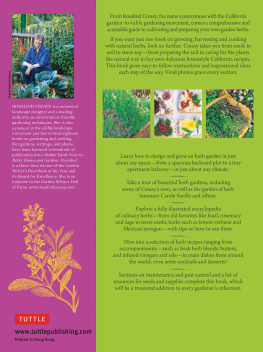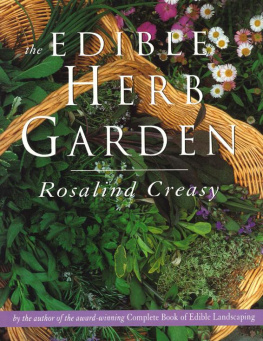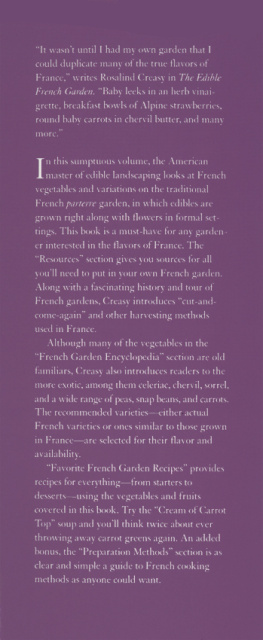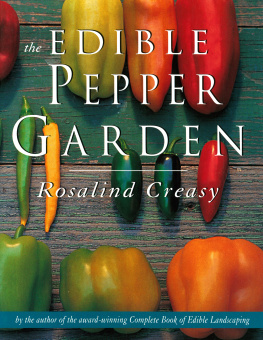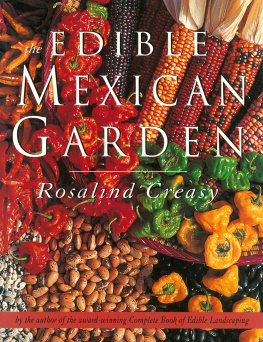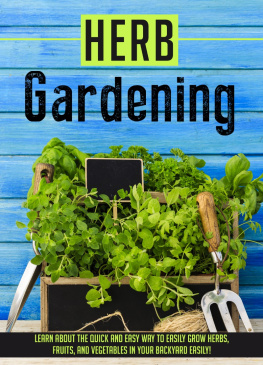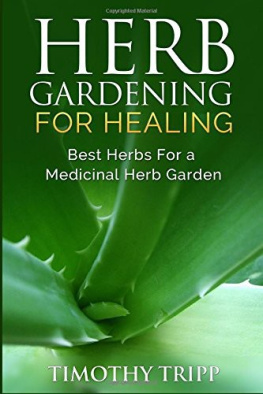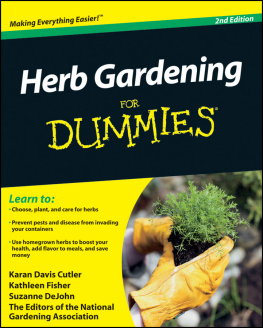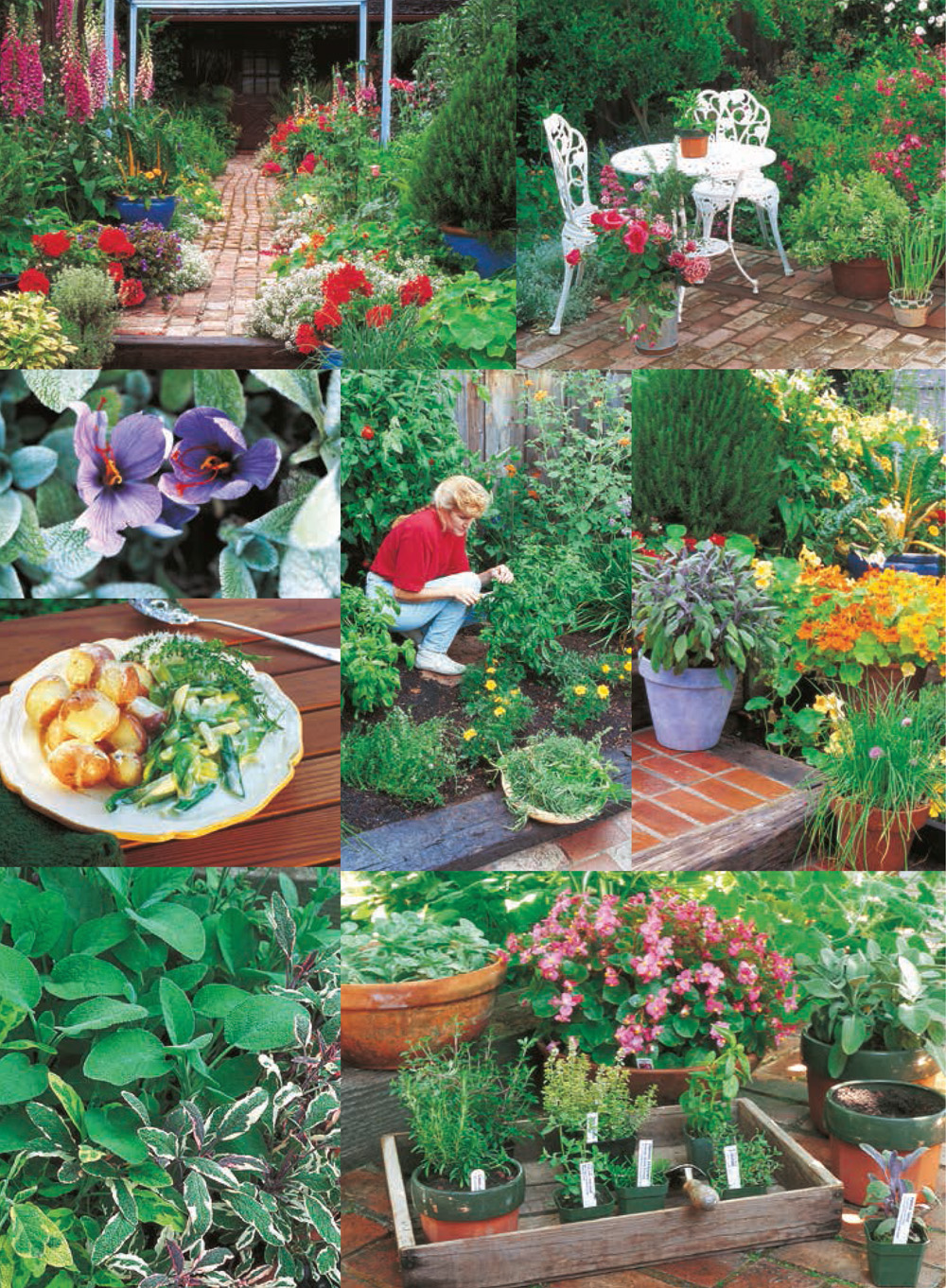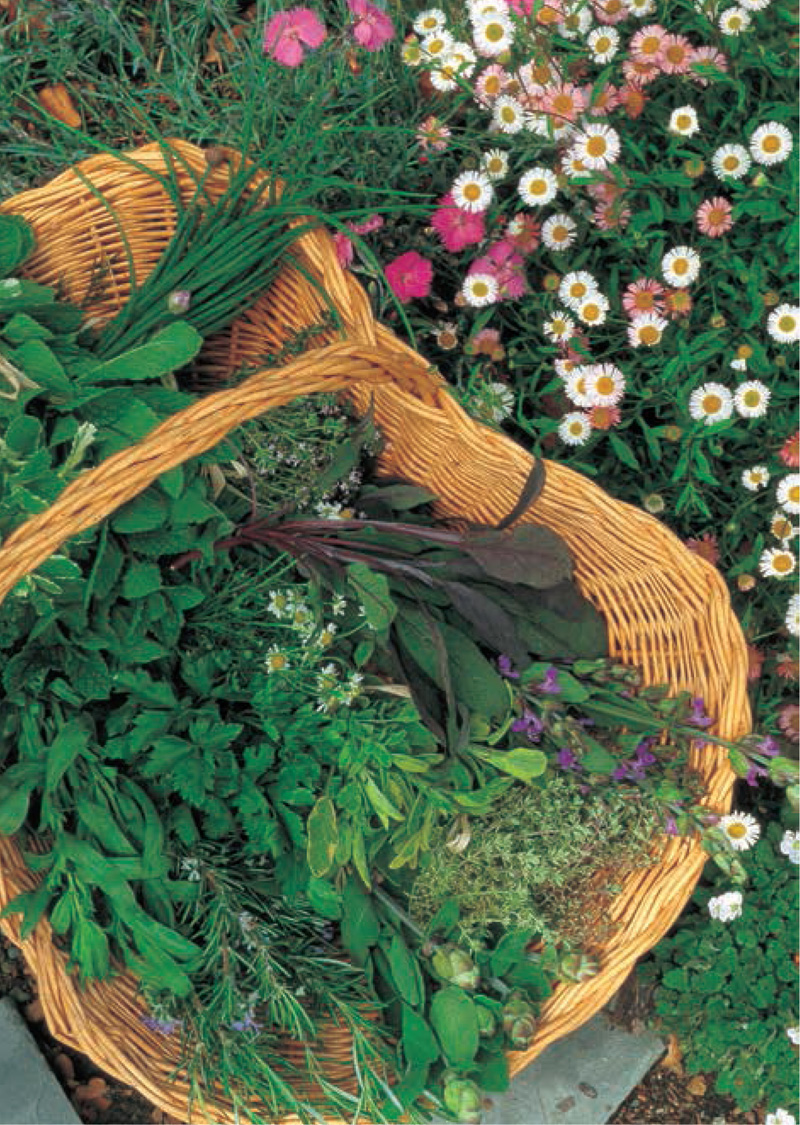THE
Kitchen Herb
GARDEN

Growing and Preparing Essential Herbs
ROSALIND CREASY

Preface
Growing up, I was an herb illiterate. All I knew was that, in our house, dill was a flavor in pickles, sage was added to turkey stuffing; and parsley was put on the side of a plate and you never ate it. Today, as my grandmother would say, I grow an elegant sufficiency of herbs, most of them in containers conveniently on my front patio. I seldom need to buy them, and I can have herbs that arent available in most food markets. With a symphony of flavors at my fingertips, I just harvest a few sprigs of sage and/or thyme to kick up the flavor of roasted vegetables, or I can snip a few leaves of chives for egg salad, or add cilantro to a spicy wrap on a whimmuch of the year they are all but a few feet away.
Years ago I started growing herbs for their culinary uses but as the time went on I realized that theyre integral to a healthy lifestyle. Ive even been asked by a few doctors around the country to design mini herb gardens outside their offices so their dietitians can instruct patients on healthier ways to eat. Why are health professionals enthusiastic about herbs? First, most of the culinary herbs are very high in antioxidantsthose ingredients in food that are thought to boost our immune system, prevent damage from environmental toxins, and mitigate against some of the effects of aging. Most research indicates they are more effective when taken in food than in supplements. Popular herbs like oregano, rosemary, basil, thyme and cumin are antioxidant-rich, and the ubiquitous parsley, probably the most popular and nutritious herb in the world, is not only high in antioxidants; it is also very high in vitamins C and A, folic acid, and iron. But thats just one aspect of herbs healthy side. For those of us who try to limit meat in our diet, herbs can add needed flavor to our meals. I like to substitute herbs for the pepperoni on a pizza. I add a few anise seeds to the sauce and place chopped parsley and oregano under the cheese. Just before serving I sprinkle on a generous amount of fresh chopped basil. In a similar vein, herbs are perfect for folks cutting down on salt.
Weve all been exposed to the benefits of herbal teaschamomile for sleep, peppermint for digestive health, and so on, but instead of buying flavored waters in chemical-laden plastic bottles, why not flavor your home-filtered drinking water with a little lemon balm, cinnamon basil or mint? And instead of air fresheners with their man-made chemical scents, try a small potpourri of sweet smelling anise hyssop and lavender in the living room or a fresh bouquet of Red Ruben basil in the bathroom.
A small patch of fresh herbs can definitely up your game when you entertain. With your herb garden you can create authentic ethnic recipes using herbs you cant find in stores, through simple additions such as sweet woodruff to a traditional German May Wine, Thai basil and lemon grassto your curry, and the delicate chervil to a classic French mesclun salad. Or try some creative ideas I learned when working with chefs, like using the sturdy stems of tall rosemaries as flavorful skewers for kebabs, frying fresh sage leaves for a crunchy topping for a squash, or floating a blue borage flower atop a glass of sparkling water or white wine. (And speaking of borage, for a parlor trick, put a few borage blossoms in a small bowl of white wine vinegar and in about twenty minutes, viola, they turn pink!)
Another advantage of herbs is that they can be a lovely addition to your landscape. Imagine the silvery foliage and fragrant flowers of lavender and the large yellow sprays of fennel flowers as stars in your ornamental border. Picture a green fragrant carpet of sweet woodruff along your shady woodland path, or even a clipped rosemary topiary next to your front porch. Further, in the correct climate and given the right exposure, since they are such healthy growers they usually look their best all season long. Most herbs have few pests and, with good drainage, few diseases. As a bonus, most are drought tolerant. The perennials such as sage, thyme, fennel and oregano only require cutting back in spring (as a bonus, use the trimmings in the coals when you are grilling). In fact, I recommend herbs to my novice landscaping clients, as I consider them edible plants with training wheels.
Id like to end my homage by pointing out that herbs are a big plus for the environment. Their small flowers, which are preferred by most beneficial insects, including our threatened bees, provide a long season of pollen. Plus those most super of herbs, parsley, and its relatives dill and fennel, also provide food for the black swallowtail larvae. Clearly I cant praise herbs enough!


A Home Herb Garden
What a luxury it is to have a garden full of herbs! Even this countrys best chefs usually cant match the meals created from such a garden. Imagine having enough lemon thyme or fennel to be able to use the prunings for smoking pheasant or salmon. Think of creating a salad, as if from the heart of France, with fresh tarragon and chervil, or making a Thai salad with real Thai basil. Fresh herbs are the signature of a chef and often a specific cuisine, yet very few markets in this country offer more than a meager selection.
When I think back on my cooking of years ago, it feels as though I was working in black and white and monaural. The form was there and it was enjoyable, but the depth and richness were missing. Now that I regularly use fresh herbs, Im cooking in full color and stereo. The zip of fresh mint or the many flavors of thyme give the dishes more dimension. Decades ago I started on my herb adventure by adding fresh chives to potato soup and fresh basil to spaghetti sauce. What a difference! I went on to use fresh dill on fish, pesto on pasta, and herb vinegars on salads. Now, after years of exposure to the full range of herbs, and thanks to many peoples guidance, I use many more in my cooking, and most of the year they are fresh.
There are dozens of varieties of thyme and I chose six different ones to set off my bird bath. In the perimeter beds I planted chives, scented geraniums, golden sage, and a selection of salad greens. To unify this little garden I included the showy, but poisonous, tall graceful foxgloves and blue star creeper (Laurentia fluviatilis) in between the boards.
This harvest of fresh herbs is every chefs dream. Included are many of the stars of the culinary herb garden; chives, French thyme, purple sage, sage flowers, silver lemon thyme, sage buds, rosemary, and French tarragon. In the middle are sprigs of Italian flat-leaf parsley and the flowers of German chamomile.

